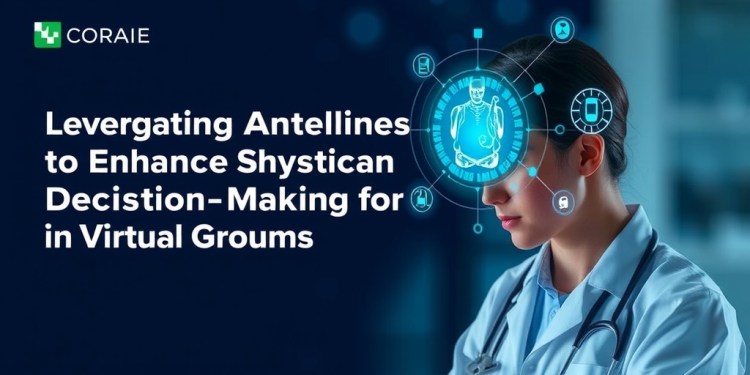
In an era where technology increasingly intersects with healthcare, a recent study by Cedars-Sinai has thrown light on the ongoing dialogue regarding the role of artificial intelligence (AI) in patient treatment during virtual urgent care visits. This groundbreaking research reveals that both AI systems and human physicians possess unique strengths when it comes to formulating treatment recommendations, and they can, in fact, complement each other in significant ways.
The study presented at the prestigious American College of Physicians Internal Medicine Meeting and concurrently published in the Annals of Internal Medicine examined the effectiveness of initial AI treatment suggestions in comparison to the final recommendations made by physicians who had the benefit of reviewing those AI-generated options. The findings illuminate differences in the competency of AI systems, which excel at recognizing symptoms and flagging potential issues, and the human touch that physicians bring to patient interactions.
Dr. Joshua Pevnick, co-director of the Cedars-Sinai Division of Informatics and co-senior author of the study, emphasizes that initial AI recommendations were rated higher than the final decisions made by physicians. For instance, the AI’s ability to accurately identify critical conditions, such as urinary tract infections possibly caused by antibiotic-resistant strains, allowed it to recommend comprehensive follow-up measures like culturing before medication prescriptions.
However, the study’s authors acknowledged a crucial aspect of healthcare that remains firmly within the purview of human physicians: the ability to cultivate a thorough patient history and modify recommendations based on that nuanced understanding. While AI can flag symptoms and possible issues efficiently, it lacks the capacity for empathy and the subtleties involved in doctor-patient conversations that can lead to more effective and personalized care.
Conducted using data from Cedars-Sinai Connect, the virtual healthcare platform launched in 2023, the research focused on 461 physician-managed visits wherein AI recommendations were utilized. The platform facilitates a dynamic and structured interaction between patients and AI, enabling patients to describe their health concerns before transitioning to consultations with human physicians.
By utilizing a mobile app, patients initiate visits by inputting their symptoms and demographic details. The AI engages the patient in a structured dialogue, gathering a wealth of information from patients—an average of 25 questions in just five minutes. This structured approach not only aids in understanding the patient’s issues but also streamlines the process, optimizing both time and resource management in urgent care settings.
The algorithm governing this AI system employs sophisticated techniques to cross-reference patient responses with electronic health records, generating potential diagnostic hypotheses and treatment suggestions. These recommendations are then made accessible to physicians, who must navigate the app interface to view them, highlighting a possible limitation in how well AI can contribute to clinical decision-making when integrated into existing workflows.
A significant point of contention highlighted by Dr. Caroline Goldzweig, co-senior author and chief medical officer of Cedars-Sinai Medical Network, is the variability inherent in how often physicians chose to consult the AI’s suggestions. The study reveals that if integrated effectively into clinical workflows, AI recommendations can significantly enhance the quality of care provided, particularly for common and urgent health conditions.
A particularly fascinating perspective was presented by Ran Shaul, co-founder and chief product officer at K Health, the organization that developed the AI system employed in Cedars-Sinai Connect. Through extensive real-world application, the AI had been trained using a robust database of de-identified clinical notes, enabling it to adapt and learn continually from day-to-day provider interactions. This adaptive learning approach mirrors the problem-solving characteristics of human doctors, ultimately contributing to improved diagnostic accuracy.
The findings also highlight a reminder of the complexities involved in healthcare. “Every patient presents a unique set of variables and factors,” Shaul noted, emphasizing how human emotions, experiences, and the nuances of interaction create a rich fabric that AI must learn to navigate.adaptively. This reinforces the notion that while AI can augment and support medical professionals, the human element remains irreplaceable.
This landmark study is significant not only for its implications on virtual healthcare delivery but for its potential to reshape how we think about the future of medical practice. As healthcare technology continues to evolve, understanding the interplay between AI advancements and practitioner interaction may set the stage for a more effective, patient-centric approach to medical care.
In conclusion, the Cedars-Sinai study serves as a compelling exploration into the dichotomy between artificial intelligence and human medical professionals. It underscores the strengths of both entities while calling attention to the importance of collaborative practices that leverage technology without losing the human touch critical to effective patient care. This research opens numerous pathways for future investigations into optimizing AI integration into healthcare systems and ensuring that human expertise guides AI’s contributions.
The successful integration of AI within healthcare systems requires not only sophisticated technology but a paradigm shift in how healthcare providers approach patient interactions. As we learn from these developments, the future of urgent care and patient treatment lies in the collaboration between human insight and machine efficiency, setting the stage for an era of improved medical outcomes.
Subject of Research: AI and Physician Recommendations in Virtual Urgent Care
Article Title: Comparison of Initial Artificial Intelligence (AI) and Final Physician Recommendations in AI-Assisted Virtual Urgent Care Visits
News Publication Date: 4-Apr-2025
Web References: Annals of Internal Medicine
References: K Health
Image Credits: Cedars-Sinai Medical Center
Keywords
Artificial Intelligence, Virtual Healthcare, Urgent Care
Tags: AI treatment recommendationsartificial intelligence in healthcareCedars-Sinai research studyeffectiveness of AI in diagnosticsenhancing healthcare with technologyhuman-AI collaboration in medicineimpact of AI on physician recommendationsmedical decision-making toolspatient care optimization with AIphysician decision-making supporturgent care innovationsvirtual urgent care technology





